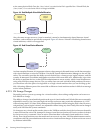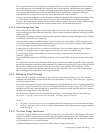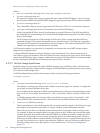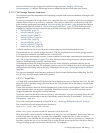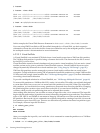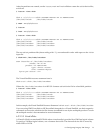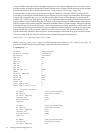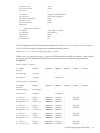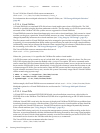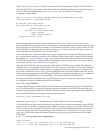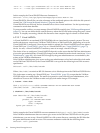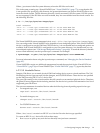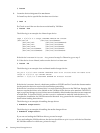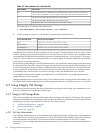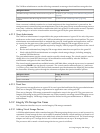sd disk01-04 vxvm_4-01 ENABLED 2048000 0 - - -
To use VxVM, the Virtual LvDisk resource statement is
disk:scsi::lv:/dev/vx/rdsk/VxvmTest1/vxvm_2.
For information about multipath solutions for Virtual LvDisks, see “VM Storage Multipath Solutions”
(page 66).
6.2.2.3.4 Virtual FileDisks
A Virtual FileDisk is an emulated SCSI disk whose virtual media comes from a VM Host file. The VM
Host file is specified using the absolute pathname to the file. The file can be on a VxFS file system locally
mounted on the VM Host. NFS file systems are not supported for Virtual FileDisks.
Virtual FileDiskscannot be shared simultaneously across active virtual machiness. Only one active virtual
machine can be given a particular Virtual FileDisk resource at a time. Virtual FileDisk resources can be
changed dynamically between active virtual machines (see “Using Integrity VM Storage” (page 82)).
The file systems used for Virtual FileDisks need to be managed to prevent data corruptions. To help with
accounting, it isrecommended that all files undera given directory beused with a single virtualmachines.
Additionally, it may help to allocate file directories from complete logical volumes or whole disks to make
the accounting even easier. See “VM Storage Management” (page 67) for more details.
The Virtual FileDisk resource statement takes the form of:
disk:scsi::file:/pathname/file
Where the /pathname/file specifies the VM Host file used as virtual media.
A VxFS file system can be created on top of a whole disk, disk partition, or logical volume. For files over
2GB, VxFS requires the file system be marked with a largefiles option. The mkfs command can be
used tocreate theVxFS file systemsdirectly. Oncethe filesystems are created,mount canbe used tomount
them onto the VM Host file system. Alternatively, if using logical volumes to create the file system on, the
volume manager GUIs like sam can be used to create the file systems and their mount points, when the
logical volumes are created. In any case, once the file system is mounted, empty files for Virtual FileDisk
can be created using hpvmdevmgt.
# mkfs -F vxfs -o largefiles /dev/dsk/c1t2d0
# mount /dev/dsk/c1t2d0 /fdev/frackA/
# hpvmdevmgmt -S 4G /fdev/frackA/disk1
In this example, the Virtual FileDisk resource statement is disk:scsi::file:/fdev/frackA/disk1.
Multipath options for a Virtual FileDisk device are discussed in “VM Storage Multipath Solutions”
(page 66).
6.2.2.3.5 Virtual DVDs
A Virtual DVD is an emulated SCSI DVD-ROM with virtual media that comes from a disc inside of a
CD/DVD drive on the VM Host. The VM Host CD/DVD drive is specified using an HP-UX sdisk character
device file.
While the Virtual DVD is read-only, the slowness of the physical VM Host CD/DVD drives prohibits them
from being shared across active virtual machines. Thus only one active virtual machine at time should be
given a particular Virtual DVD resource. Virtual DVD resources can be changed dynamically between
active virtual machines (see “Using Integrity VM Storage” (page 82)).
The Virtual DVDs, being read-only, do not require management to prevent conflicts writing to the device.
However, to prevent potentially sensitive information from being accessed by the wrong virtual machine,
make sure you know which virtual machine currently owns the device before you load a CD/DVD. This
information can be found on the VM Host with the hpvmstatus commands.
The Virtual DVD resource statement takes the form of:
dvd:scsi::disk:/dev/rdsk/cXtYdZ
76 Creating Virtual Storage Devices



